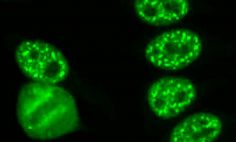What is Precision Environmental Health?
Precision Environmental Health is a research area that helps scientists learn how interactions between the environment and genetics can affect a person’s health. The goals are to prevent disease and help individuals reduce their unique health risks from environmental exposures. Many environmental factors can influence human health.
Some factors, such as healthy diet and access to neighborhood parks, are good. Other factors, such as air pollution and exposure to certain pesticides, can lead to poor health. But how an individual responds to those factors in different ways is based on their unique biological makeup. Precision Environmental Health is about understanding those differences and developing disease prevention efforts that are based on a person’s specific needs.
By supporting research in Precision Environmental Health, the National Institute of Environmental Health Sciences (NIEHS) plans to identify those who are most vulnerable to negative health outcomes from environmental threats. That scientific knowledge will help to improve disease prevention efforts at the individual level.

This diagram illustrates how the epigenome changes how the DNA in our cells use genetic instructions.
What research is happening in Precision Environmental Health?
For the last 20 years, the NIEHS Personalized Environment and Genes Study (PEGS) has gathered health, exposure, medical, and genetic data from nearly 20,000 participants in North Carolina from diverse backgrounds. Researchers seek to use this information to understand the causes of diseases and the effects of environment, diet, lifestyle, and genetic factors on human health. Enrollment in PEGS is ongoing.
Another NIH-funded study, Utilizing In Vitro Functional Genomics Advances for Gene-Environment (GxE) Discovery and Validation, aims to better understand the connection between environmental exposure and human disease. In vitro refers to cell-based research, and genomics is the study of the complete set of an individual’s DNA. The research program focuses on environmental agents such as industrial chemicals, metals, pesticides and herbicides, air pollutants, and biologically derived toxins (hazardous substances made from plants, animals, and microorganisms). The goal is to find new in vitro approaches to understand and treat human diseases caused by the environment.
The NIEHS Toxicant Exposures and Responses by Genomic and Epigenomic Regulators of Transcription (TaRGET) Program seeks to understand how environmental exposures lead to epigenetic changes—that is, modifications to DNA that affect gene expression without altering the underlying genetic code. Toxic substances such as heavy metals—for example, arsenic and nickel—are associated with epigenetic changes that may lead to cancer, cardiovascular diseases, autoimmune diseases, and neurological disorders. The first phase of TaRGET focused on how environmental exposures affect epigenetic changes that influence the way our cells carry out their physiological functions.
The second phase focuses on characterizing epigenetic changes caused by environmental exposures in different types of cell tissues such as the brain, lung, liver, skin, and blood. It also focuses on using easier-to-access surrogate tissues to determine if we can observe epigenetic changes in blood that will predict or correlate with epigenetic changes in a particular type of tissue. Findings were done using mouse models, which will be used to inform human studies.
The NIH National Human Genome Research Institute’s Encyclopedia of DNA Elements (ENCODE) was a project created to understand and analyze the human genome. Researchers can use ENCODE data—which has been combined with other data, such as environmental information—to better understand diseases and drugs, how an individual’s genetic makeup interacts with the environment, and how those affect their health. Researchers and scientists aim to use the information collected by ENCODE to interpret the human genome sequence and apply it to better understand human biology and improve health, and thanks to a new understanding of how people’s genomes and epigenomes work, ENCODE’s data will help them do so.






